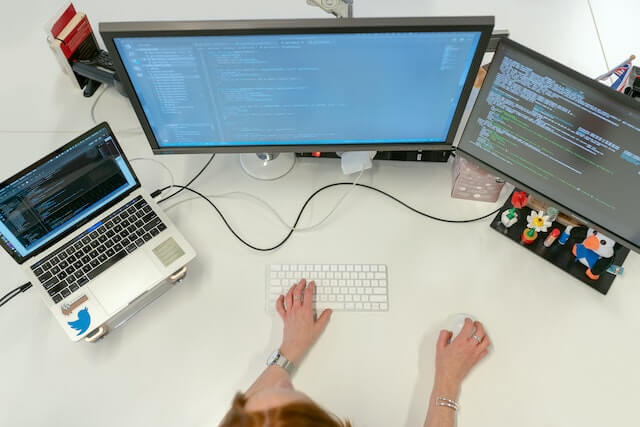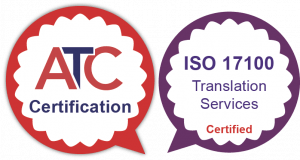Once your app or software is released on the app store, naturally the next step is to grow the user base. Once the utility of your app has been proven at home, what better way to grow a user base than to allow your app to be used across regions or countries?
What is App Localisation?
App localisation is the process of making changes to your app so that it fits linguistically, culturally and technically into a different market or segment of the market.
This could mean changing something as simple as a colour or font, or it could mean changing layouts, form fields, language and formatting, currencies and more.
What is App Internationalisation?
Before even considering engaging a translator to translate an app or software package’s strings, they need to be made available for translation. Internationalisation, at its simplest, means designing and preparing the app so that it can accept the necessary changes to all of the aspects that may need to be localised when the app translation is commenced.
For example, the app may need to be designed in such a way that numerical outputs can be formatted differently depending on the locale, or perhaps in some regions, some form fields may need to be omitted to changed for regulatory reasons.
This stage tends to involve ensuring that strings aren’t hard-coded into an app, that the layout can be flipped for right-to-left languages, that any expansion in string length doesn’t break the layout, and that any text or other elements that may need to be swapped out on a locale by locale basis can be done programmatically. You can read more about preparing your systems for translation on our blog, or by following a number of online courses.
Choosing a Software Localisation Partner
When choosing someone to translate an app or SaaS, it’s important to use linguists who are familiar with the type of content they will be translating. That means using different linguists to translate UI strings and EULAs, as the nature of the content is so different.
Likewise, multimedia-heavy apps will require translators who understand the content of the media itself, as well as who are familiar with subtitle translation or voiceover.
All our mobile and web app translators are selected for their expertise in the subject matter, so that you can be sure that your projects will be handled by people with a real understanding and knowledge of the subject matter.
We carry out a wide variety of different translations of apps and software. Here are just some examples of the sort of content that we regularly translate:
- Marketing materials
- Software strings
- Data sheets
- Product information
- Terms and Conditions of Use / EULAs

Mobile App Localisation
We have translated a number of apps in different formats, including iOS, Android and Windows apps. We are sent software strings for translation in a range of formats, including Excel, RESX, Java Properties, JSON, XML or plain TSV files.
We have also been asked to provide native-speaker testing and screenshot review services, to check the mobile apps are fully translated and function correctly once the localised builds have been generated.
Web App Localisation
Application localisation presents particular challenges, and great care needs to be taken when translating software strings that have been extracted from applications.
Most formats we receive work well for translating an app, but the strings are often not in context other than a simple identifier, so it is sometimes difficult to know exactly what is meant, or where the string can be found within the app.
When you get updates of software strings for translation, is it important to create a translation memory of previous translations so that you can get consistency of terminology throughout all the software. This should include the context or string IDs alongside the text itself.
App Localisation Hints & Tips
There will always be questions from the translators about how a particular word or phrase will be used. It is always worthwhile including screenshots of any app for translation where there may be ambiguity. Does “Open” represent a verb (i.e. to open, or an adjective, i.e. “a ticket that is open”).
Let’s take an example of the word “Open”. Is this an adjective showing a support ticket status or a verb?
Datasheets and Product Information
As well as the app itself, having translated datasheets, product information or help content is a very important thing to enable you to sell successfully in your target markets. People expect such information in their own language.
There is usually a lot of repeated wording on data sheets and in user guides, but the technical specifications will differ from file to file. It is therefore vital that someone with a good eye for detail is involved in the process of checking that all the information is correct in the target language.
With product information, people need to be able to read about the products they have purchased in their own language to avoid any misunderstanding.
It is also very important to ensure that any licensing information and terms and conditions are translated into the local language.
App Marketing Material Translation
It is clearly very important to ensure that your marketing message is right and that it sounds good in another language. This is key to being able to sell your products and services in another country successfully.
For more information on how we can help you market your translated SaaS product or app abroad, please see our multilingual marketing page.
Other Documents
We regularly also translate many other types of document for our clients involved in the area of IT and app development.
Here are just a few examples of the type of document that we regularly work with:
- RFP responses
- Contracts
- Legal documents
- Safety information
- Training and HR materials
Having a translation memory will ensure that you consistently use the same vocabulary each time and across document types. Ask your translation company about this.
Likewise, it is a good idea to ensure that you have a glossary of key terms in place with definitions of what is meant by those terms.
The glossary and TMs are living documents that should be updated as new terms start to be used.
We can help you to build up glossaries with terms that you would typically use. This will help when following a more agile CI/CD pipeline, as it will reduce time to market for each build.
Request a Quotation
